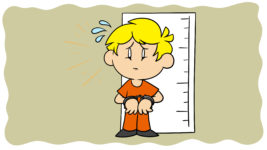Every good writer knows the pain of research, investing hour after hour in the search for relevant facts and figures that will give their story the heft of realism. These details are the lifeblood of a believable world, but like any good thing they can cause trouble in excess.
The problem is that real-world information is functionally infinite. A description of how a gun works could segue into a comparison to other weapons, the history of the gun manufacturer, or conflicts in which the gun has been used. While all of these facts may be legitimately interesting, including too many of them means that a supporting detail starts to colonize the plot. Readers can identify real-world information faster than authors would like, and will quickly get the feeling that they’ve stumbled into a textbook.
Worse than this, many readers will feel irritated by the inclusion of conspicuous tracts of real-world information. This is because this information is perceived as not ‘belonging’ to the author and so – fairly or not – it ends up feeling like a huge section of text has been copied and pasted into the story.
The technical trap
The pitfalls of technical writing are often right in an author’s blind spot. Having chosen to write about a subject, and having then discovered a bunch of fascinating facts that justify that choice, the writer is in a situation where they see themselves as simply writing interesting content. Why would they ever leave out something which is both interesting and relevant?
From the outside, it can be easy to point at certain facts and figures as adding little to the story, but to authors these are often prized jewels. Their decision to have a car backfire, for instance, may have been one of the more troubling parts of their narrative until they discovered a particular model notorious for such a problem. The details of this model wouldn’t just strike them as good background information, but as content which is both fascinating and backs their choices to the hilt.
Circumstances such as the one above occur much more frequently than many people realize, and so it’s common for authors to be protective over technical details in a way others can’t quite understand. Sometimes writers who are worried about the realism of their plots feel they have found the answer in real-world minutiae. After all, how can anyone call their fictional bank robbery ridiculous when a far more outlandish one really occurred?
The suggestion that they pare down these technical details thus becomes the suggestion that they return to a state of anxiety and open up their plot to unfair criticism. Even when this is less pronounced, the suggestion still seems to be that they remove realistic details for no good reason. This mindset can only be combatted by accepting a key truth of technical writing.
What feels real vs. What is real
The key truth of technical writing is that what feels real differs vastly from what is real. Many an author will have answered the criticism ‘Nobody talks like this’ with ‘I talk like this!’ and the same point is raised in technical writing: in a work of fiction, the reader cares more about their perception of realism than actual reality.
The offshoot of this logic is that real details, no matter how numerous they are, can never really save a story element which doesn’t ‘feel’ real. Even if the story is based on real events, even if it’s nearly word for word something that happened, there’s no guarantee that readers will buy it.
The act of justifying a risky plot-point by cramming in real-world technical writing is therefore not just unhelpful but useless. As I’ve written before, ‘realism’ in fiction is actually just consistency within the world of the story.
Starkly put, if you feel real-world details are vital to making your plot believable then that plot needs further work. Technical details work when they feel true within the world of the story – it is their resonance within the created world that makes them effective, not their connection to the world the reader inhabits.
This knowledge helps to combat an author’s desire to paper over cracks in the story with facts.
This said, not every real-world fact is detrimental to a work – in fact a few resonant examples can really emphasize the realism of a story. What’s needed is a golden rule for when to include these kinds of details and when to leave them out.
The golden rule
The golden rule for including technical details is best put in the form of a question:
Would you include this information if it wasn’t true?
That is to say, stripped of the actual, real-world truth of its existence, does the information still have value? If all it brings to the table is that it’s true then it’s little more than trivia, and since that trivia isn’t your own it has little place in your story.
An excellent example of the golden rule in action is Warren Ellis’ Gun Machine. In this novel, a policeman stumbles into an apartment which has been decorated with hundreds of guns. Over the course of decades, each gun has been used in a murder, and as the story unfurls the reader learns that each gun has been chosen with the victim in mind.
This setup gives Ellis more than enough justification to dive into gun trivia, especially once two lab technicians enter the story as main characters. Anything about these guns, all of which exist in the real world, can be mentioned in the process of a police investigation, and yet Ellis is incredibly disciplined in what he chooses to include.
In the below passage one of the technicians describes one of the guns, presenting a range of real-world facts about the weapon:
It is in fact an Asa Waters Model 1836 flintlock pistol, which sold new at a hefty nine dollars. The last flintlock sold to the US government, in fact; a .45-caliber, muzzle-load. Based on the kind of naval boarding pistol that you could load with shrapnel, nails, or any other thing that was lying around… You’re not getting it. Everything we know right now suggests that every gun in that apartment was used to kill someone. So what you’re looking at is a pistol nearly two hundred years old that our guy restored to where it’d make a reliable murder weapon…
– Warren Ellis, Gun Machine
At first, many of the details about the flintlock seem to be present solely for flavor, and yet in fact almost all of them are relevant to the plot. The idea of a gun selling for nine dollars is an interesting idea, and yet it also gives the reader a tangible appreciation for how old the weapon really is. Likewise the fact that it could be loaded with any small object comes into play once it becomes clear that the killer would have had to manufacture his own bullets.
One of very few details with no specific relevance is the bullet caliber, and yet it would feel strange if the technician left this detail out – the world of the story, recognizable as our own, requires the character to share this fact.
Through this process, almost everything the character says about the gun is something which would have to be included even if it wasn’t true. Whether it’s relevant to plot development or simply something the reader would expect the character to share, every detail is justified.
The description of the flintlock pistol is one of the longest in the book, since it tells the reader a lot about the killer’s methodology. Where less information is required by the story, less is given, and yet it is still relevant to the plot:
An old Charter Arms Bulldog .44. Cheap-ass gun gussied up to look like a serious gun. Wouldn’t be surprised if a chunk of the hammer had flaked off and blown back… Son of Sam used a .44 Bulldog.
It is not just that each fact justifies its presence, but that the needs of the plot clearly came first. Ellis needed the gun to do two things:
- To explode and injure one of the technicians examining it.
- To foreshadow the fact that the killer has access to guns kept in storage by the police (including those of famed killers such as Son of Sam).
He then went out and found the best real-world gun for the job, but since his research was focused on the plot, and not on including information for information’s own sake, his technical details didn’t have the opportunity to derail the path of the narrative or disengage the reader.
Making it look easy
The key to including relevant, interesting technical details is in achieving the most helpful perspective; not going looking for opportunities to include plot-strengthening facts, but instead identifying the moments where facts are needed and selecting the best ones for the job.
Asking yourself whether you’d include information even if it wasn’t true forces you to interrogate it in a way that’s difficult to achieve otherwise. You’re really asking ‘how interesting is this?’ and ‘what does this tell the reader?’ at the same time. If a piece of information passes this test then you can be assured that it will fit naturally into the piece – it will definitively ‘belong’ in the story.
That’s the great thing about the golden rule. Yes, it stops you overloading the reader, but it isn’t just a preventative measure. Every time you apply it you’re improving the quality of your writing, and taking one more step towards the creation of the purposeful realism your story deserves.
For more on avoiding the pitfalls of overwriting, check out Are unnecessary scenes and passages ruining your story? and How many characters should a novel have?
Have you put a book down because it was obsessed with minutiae, or do you love a book packed with real-world information? Let me know in the comments.






6 thoughts on “One Simple Rule To Avoid Technical Details Ruining Your Story”
I never put the book down, but Jodi Piccoult’s House Rules seemed like the author had complied a checklist of traits for her character with high functioning autism. And as she was writing, she absolutely had to have that character, and his family who cared for him, tick every box on the list, which was particularly annoying to a lot of people in the autistic/Asperger’s community.
The result was an MC who was more of a caricature of someone with an autistic spectrum disorder, as opposed to a believable character that dealt with the challenges of an autistic spectrum disorder that readers might have related to.
Hi Nathanielle,
That’s a great example, and shows there are real-world consequences to authors not knowing when enough is enough.
Best,
Rob
Thanks for an informative article, and yes, many authors fall into this pit. I write MG adventure, based on history, geography, archaeology, the works. What to leave in or leave out? My first MG adventure is set in Egypt and pretty soon I was inundated with details that could be included. I decided then and there to only include what my young heroes needed to know to survive, whether it was surviving a sandstorm, finding out clues in a temple, deciphering hieroglyphics – only what was essential to the story. It worked very well and the details the kids needed did not bog the story down.
Hi Fiona,
Thanks for the kind words. Ancient Egypt is exactly the kind of risky area I was talking about, and it takes good judgement as an author not to get lost in all the details on offer. The rule you outline is a good one, both in terms of technical detail and writing in general – if it doesn’t have utility, it doesn’t belong in a story.
Best,
Rob
I’ve heard it said, use only 10% of the research you’ve done in your work. It seems to work out that way. If my character, an Irish immigrant in 1892, could see, touch and feel it, then it went in, but only if it influenced her point of view. After the first draft, I eliminated anything that didn’t follow that rule.
Hi Dorothy,
Great advice, and not dissimilar to our own about backstory (//www.standoutbooks.com/characters-backstory/). Using the character as a measure of what’s shared is a fantastic idea.
Best,
Rob